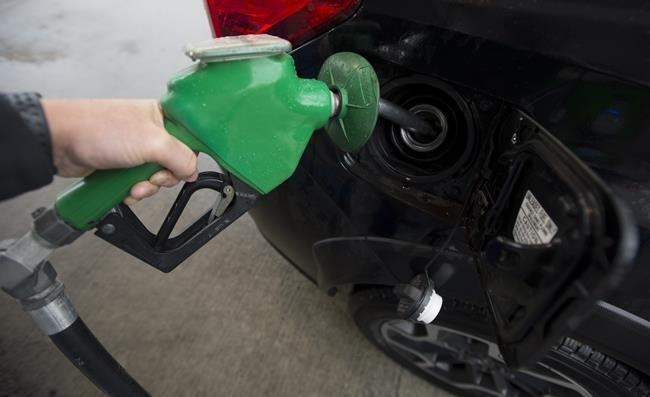OTTAWA — The federal government is delaying new emissions standards on gasoline and diesel another year but is demanding the oil and gas sector make bigger cuts to fuel emissions by 2030 given how much more money the companies are now making.
Cabinet approved the final regulations for the long-awaited Clean Fuel Standard last week and The Canadian Press obtained them today ahead of their intended publication on July 6.
A confluence of communications errors led to the regulations being distributed early upon request and the government was scrambling Monday to inform provinces as the news was about to leak.
"The CFS will be a key tool that complements pollution pricing and the pending oil and gas sector emission cap, to cut emissions and drive the use of clean fuels and technology in Canada," a statement from Environment Minister Steven Guilbeault's office said Monday.
"Since the previous draft of the CFS, we've been working to make this as focused as possible on our end goal — driving down emissions and driving up innovation."
The Clean Fuel Standard was first promised in 2016 as part of the Liberals' first climate plan. At that time it was expected it would cut 30 million tonnes of greenhouse gases a year by 2030, but a new analysis based on the final regulations is expected shortly.
The initial plan was to have draft regulations ready by the spring of 2020, but the draft wasn't published until December 2021, and was followed by a mandatory six-month comment period.
The draft regulations said the new standard would kick into gear in December 2022. But the final regulations say the first compliance check will now be in December 2023.
The draft regulations also included kerosene, jet fuel or fuel oil on the list of fuels that need to comply but those are not included in the final regulations.
But they do increase the expected cuts to emissions from both gasoline and diesel.
The draft regulations expected gasoline to drop carbon intensity 2.5 per cent in December 2022 from a baseline number set using a 2016 average intensity. The final plan adjusts that baseline slightly, and requires a drop of 3.6 per cent for gasoline, and 3.8 per cent for diesel in December 2023.
The emissions intensity cap declines each year until 2030. Initially the plan was that both gasoline and diesel emissions intensities would decline 12.5 per cent by 2030. The final regulations, however, now say gasoline has to fall 14.7 per cent by 2030, and diesel by 15 per cent.
In June 2020 the federal government said it would scale back the standard in the early years as oil and gas companies reeled from a pandemic revenue hit.
Guilbeault's office now says companies are making record profits and "there's no doubt there is the capacity to invest in clean options."
"In fact, the future sustainability of the industry depends on investment in innovation."
Most Canadian oil and gas companies reported massive profits in the first quarter as global oil prices surged, largely due to the Russian invasion of Ukraine.
In May, Guilbeault told The Canadian Press he expected those companies to use those profits to invest in clean tech, after one oilpatch CEO complained federal tax credits for carbon capture and storage technology were not generous enough.
The emissions intensity is calculated on what are known as life cycle emissions — every ounce of carbon dioxide, methane or other greenhouse gases produced when oil and gas is extracted, processed, refined, upgraded, transported and finally, burned.
There are multiple options to lower emissions intensity, such as by replacing fossil fuels with clean electricity during the extraction or refining phases, distributing biofuels such as ethanol and biodiesel, or investing in electric or hydrogen fuel-powered vehicles.
This report by The Canadian Press was first published June 27, 2022.
Mia Rabson, The Canadian Press



